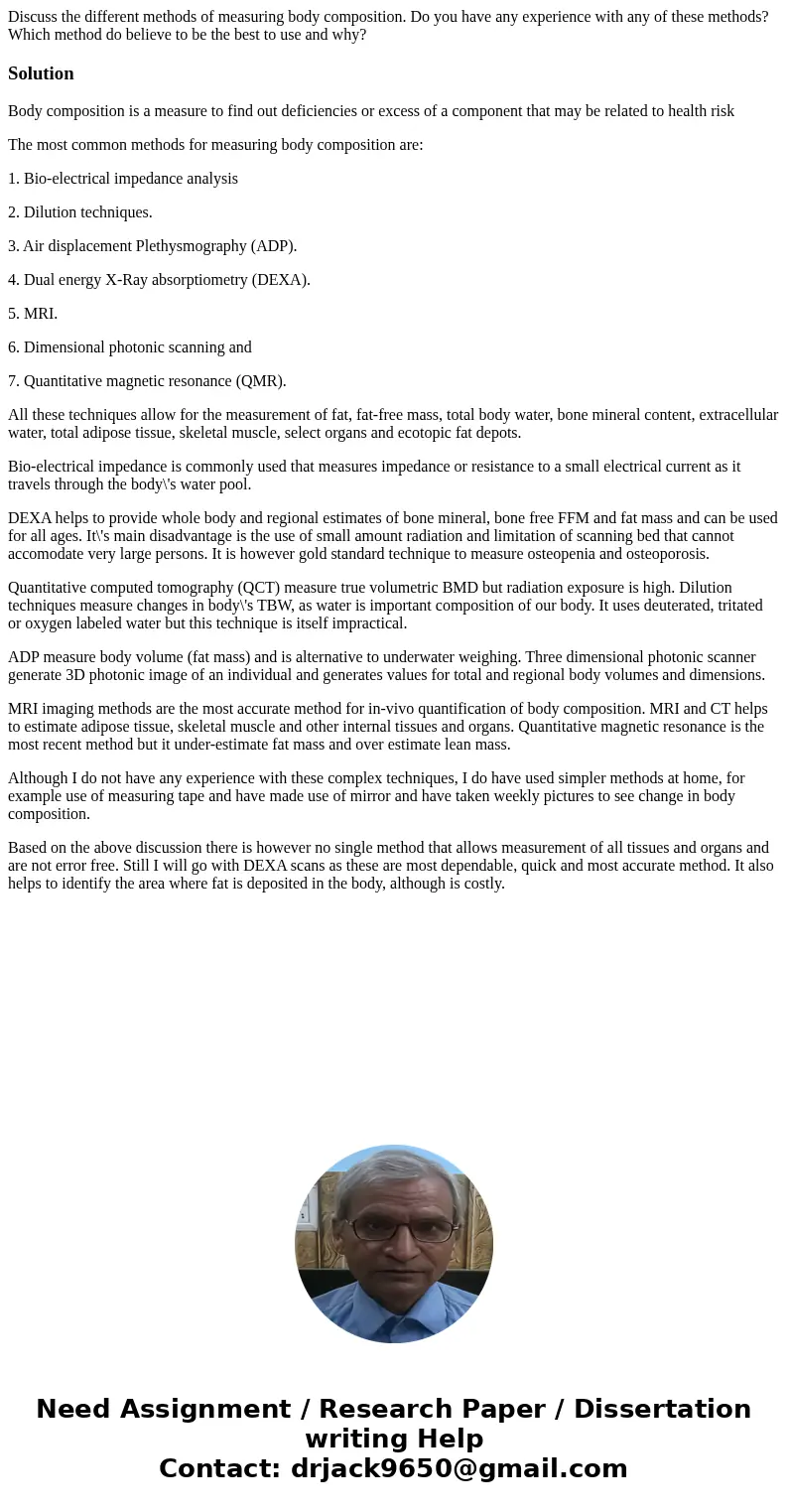Discuss the different methods of measuring body composition
Discuss the different methods of measuring body composition. Do you have any experience with any of these methods? Which method do believe to be the best to use and why?
Solution
Body composition is a measure to find out deficiencies or excess of a component that may be related to health risk
The most common methods for measuring body composition are:
1. Bio-electrical impedance analysis
2. Dilution techniques.
3. Air displacement Plethysmography (ADP).
4. Dual energy X-Ray absorptiometry (DEXA).
5. MRI.
6. Dimensional photonic scanning and
7. Quantitative magnetic resonance (QMR).
All these techniques allow for the measurement of fat, fat-free mass, total body water, bone mineral content, extracellular water, total adipose tissue, skeletal muscle, select organs and ecotopic fat depots.
Bio-electrical impedance is commonly used that measures impedance or resistance to a small electrical current as it travels through the body\'s water pool.
DEXA helps to provide whole body and regional estimates of bone mineral, bone free FFM and fat mass and can be used for all ages. It\'s main disadvantage is the use of small amount radiation and limitation of scanning bed that cannot accomodate very large persons. It is however gold standard technique to measure osteopenia and osteoporosis.
Quantitative computed tomography (QCT) measure true volumetric BMD but radiation exposure is high. Dilution techniques measure changes in body\'s TBW, as water is important composition of our body. It uses deuterated, tritated or oxygen labeled water but this technique is itself impractical.
ADP measure body volume (fat mass) and is alternative to underwater weighing. Three dimensional photonic scanner generate 3D photonic image of an individual and generates values for total and regional body volumes and dimensions.
MRI imaging methods are the most accurate method for in-vivo quantification of body composition. MRI and CT helps to estimate adipose tissue, skeletal muscle and other internal tissues and organs. Quantitative magnetic resonance is the most recent method but it under-estimate fat mass and over estimate lean mass.
Although I do not have any experience with these complex techniques, I do have used simpler methods at home, for example use of measuring tape and have made use of mirror and have taken weekly pictures to see change in body composition.
Based on the above discussion there is however no single method that allows measurement of all tissues and organs and are not error free. Still I will go with DEXA scans as these are most dependable, quick and most accurate method. It also helps to identify the area where fat is deposited in the body, although is costly.

 Homework Sourse
Homework Sourse